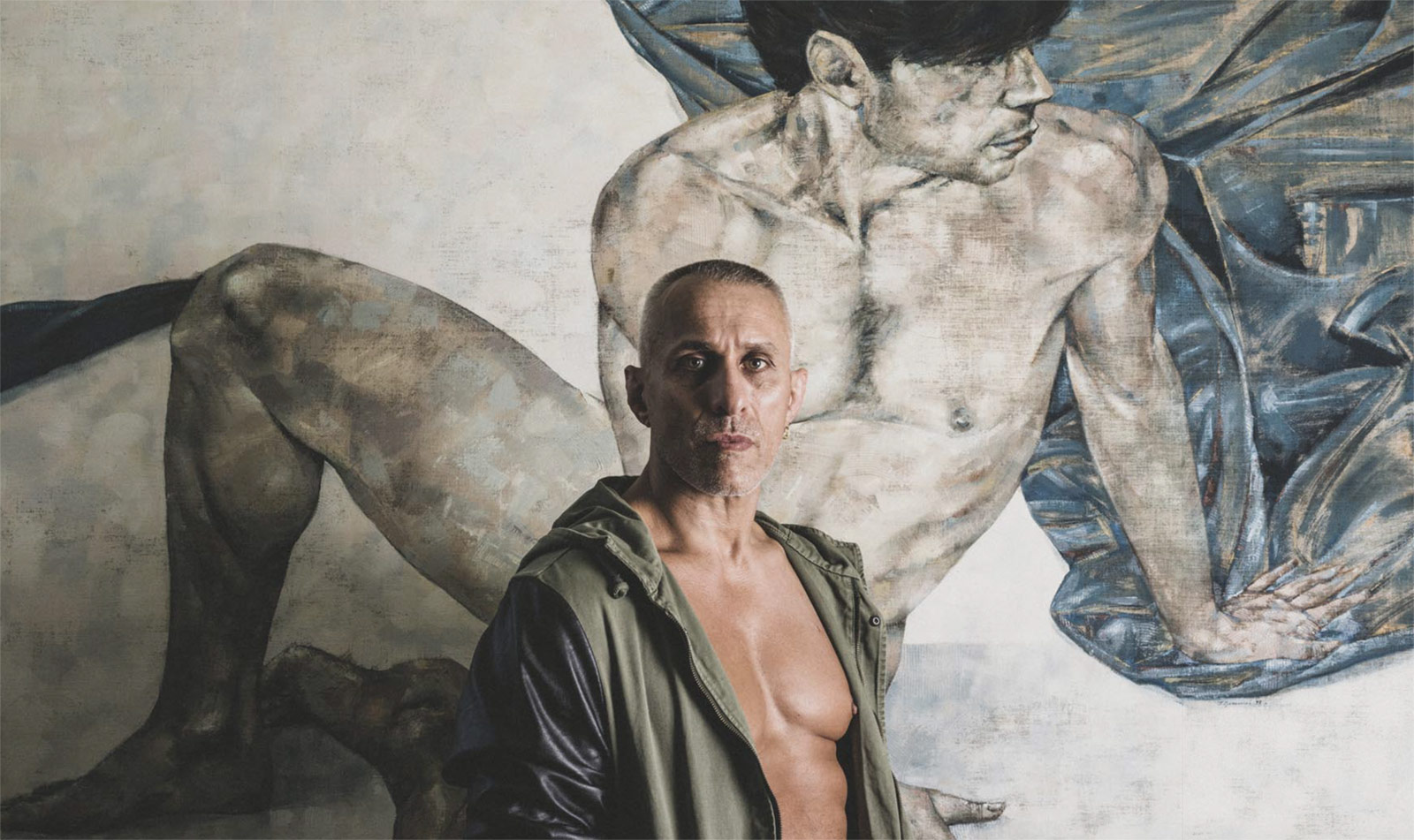
When I think of what I have been I realize who I am today and what I would Never like to be, nor to become.
If life has taught me something, I have learned it Following the steepest path, with no Shortcuts, always running uphill and never Sliding down.
I will run as long as I Have breathe to do so, then I will leave it Without regret to those who come after me.
If art has something to teach, I have learned It from life, because in it is the greatest Work of art I have ever seen.
I have had good masters, they Have convinced me to believe that wisdom Is a value too precious to possess, as well as too big, and I am only a little man who could never afford it.
I prefer to be simply just.
Tiziano Bonanni
The Art of Being Man
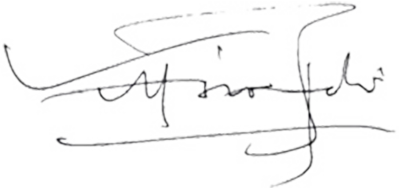
Vittorio Sgarbi
Two constants can be detected in the multiform but consistent production of Tiziano Bonanni, as if each new expressive mode of his aimed at developing aspects of the previous one, rather than severing all ties with it.
One of these constants is his fidelity to art as a testimonial of highly personal nature. Any perception of the world, any consideration of its events, whether of today’s news or of centuries-long history, or even meta-historically speaking, must perforce pass through one’s own body, one’s own skin, one’s own brain, one’s own blood (a recurrent element in Bonanni’s personal memories, the blood that gushed out in streams in his father’s butcher shop, the blood dripping from injuries sustained in competitive sport), concurring to establish selfhood.
Everything is individuality, otherness from ourselves can be perceived only through the observatory of our own experience of life eternally in fieri, as if we were laboratory specimens of ourselves. We can thus bear witness only to ourselves, and not merely due to narcissism but for the need to exist and proclaim our own presence in the world. In this sense, there is no basic difference between art and life: one is an emanation of the other and vice versa; we live to express, we express to live.
The other constant that I have noted in Bonanni is an awareness of the age-old, inexhaustibly evocative power of drawing. It would be only too easy to attribute this to his Tuscan heritage, to the great academic tradition to which his background and training link him in a relationship of objective continuity. Having noted Bonanni’s individuality, I must acknowledge to him a personality strong enough to free himself without particular problems from a too closely binding historical legacy, allowing him to choose rather than be chosen. The art of drawing is his first certainty, his most effective arm in seeking a vital confrontation in the bodies of others through the exploration of planar nudes, often seen from anomalous viewing points. Partially disintegrated by colour under the jolt of Cezanne-like faceting, the celebration of feminine mystery appears in terms of bedchamber seduction or free and throbbing nature, of gladiatorial or pugilistic games, of pleasure, promised or withheld, suggesting such felicitous graphic solutions as inserts of writing or objects in realistic silhouette. It could be objected that this faith in drawing is belied by Bonanni’s recent sculptural works, which however manage to establish entirely satisfying relations with the Junk Art materials whose hidden nobility the artist aims to reveal, like a shaman. In no way is this a contradiction of my previous observations. That three-dimensional sphere is an expansion of the pictorial planarity that came before it, as clearly exemplified by the development of a decisive motif in this transition from one state to another, that of the cross, along with the drawing that, in Renaissance, neo-Platonic, and Michelangelesque manner, remains the repository of the idea, of the creative principle from which everything departs and to which everything returns.
I do not aim at wisdom, says Bonanni, it would be too much, it is enough for me to be just. And art is a tool used to attain the ambitious goal, but also the most demanding one, to which Bonanni can aspire: to be a man in the profoundest sense, never failing to employ ruthless sincerity to crush any residue of virile rhetoric.
He is sure to attain this goal, if indeed he has not already done so.
Rome, 18 July 2019
The inner value of vision
Nicola Nuti
It was some years after our first meeting when, on a deserted sun-drenched day, I visited the studio of Tiziano Bonanni. There, what had once been his father’s shop now contained his whole world – paintings, mementoes, beloved objects (including a Guzzi Falcone motorcycle, perfectly restored and preserved). In the burning heat of summer this place appeared suspended in time, revealing Bonanni’s work as a creation apart, but linked to all things that have a story, making it, as he himself declares, “a bridge between different times, places and persons”.
An example of the complex, multifaceted meanings to be found in Bonanni’s work can be seen in Piccolo Sole[Little Sun], an assemblage made out of an old trunk found abandoned in the street. Filled with documents, photographs and school notebooks from the early 20th century, it told the story of a father who had lost his son in war and, for the rest of his life, had stored these memories of the dead boy in that very trunk. Gripped by intense emotion aroused by this random find, the artist had imagined how strong the father must have been to bear such a loss, that of his “Little Sun”. And so Bonanni decided to insert in the old trunk the sculpture of a child seated on its mother’s belly, “a belly like a field of budding flowers”, and called it Little Sun, which is also the Biblical name of Sampson (in Hebrew Shimshon means little sun). To make the work a guideline uniting different places, persons and historical eras, the artist added other objects, imbued with symbolic meaning: the jawbone of an ass, in mythology used by Sampson to defend his mother; and Malaparte’s book La pelle in the edition from 1967, the year of his own birth, as if to construct a collective memory from the propagation of one or more individual memories.
Forms emerge as the proliferation of images triggered by emotion and memory, based on analogy rather than logic; a hybridized stage set populated with actors from today, densely immersed in drama.
Bonanni’s work is closely attuned to our own time, so closely that we feel its sense of estrangement, its plausible paradoxes, its metamorphoses and discrepancies.
Although permeated with social determination, it does not exasperate the critical element.
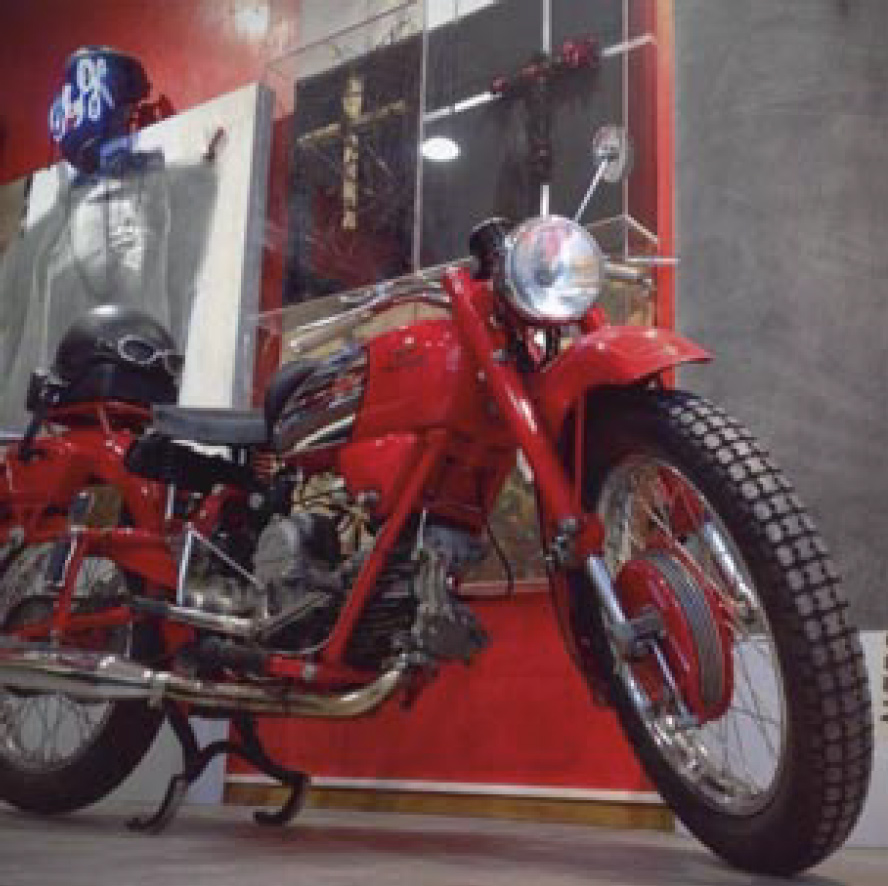
Scandicci 2016, the painter’s atelier with his Guzzi Falcone motorcycle.
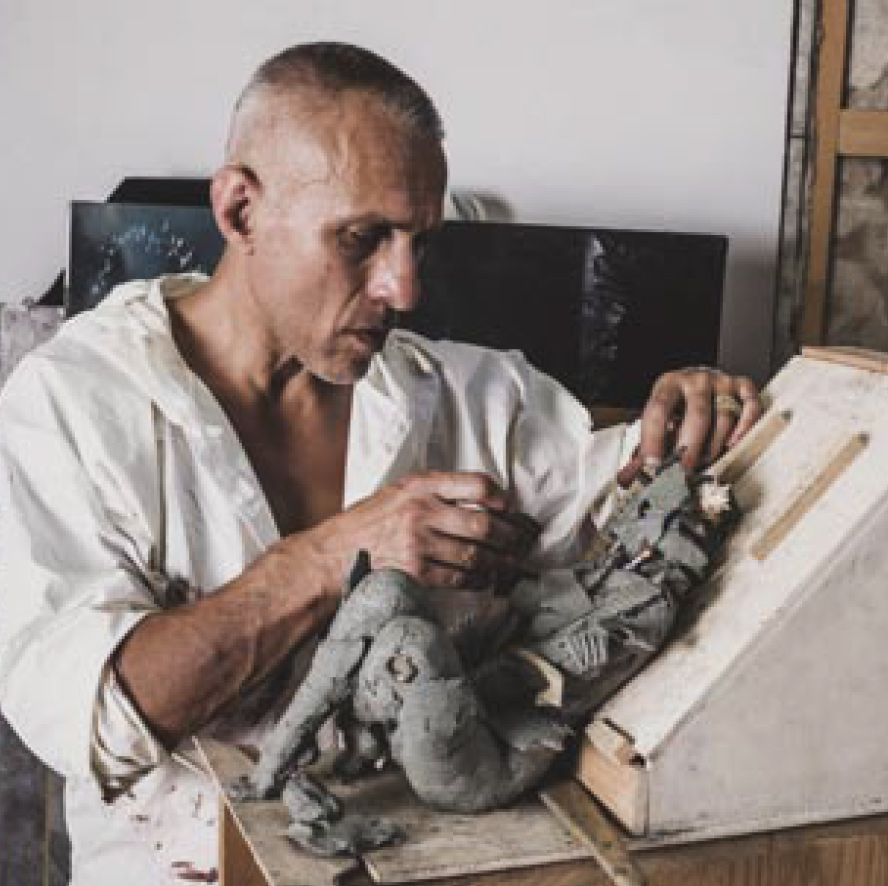
Modelling a prototype in clay.
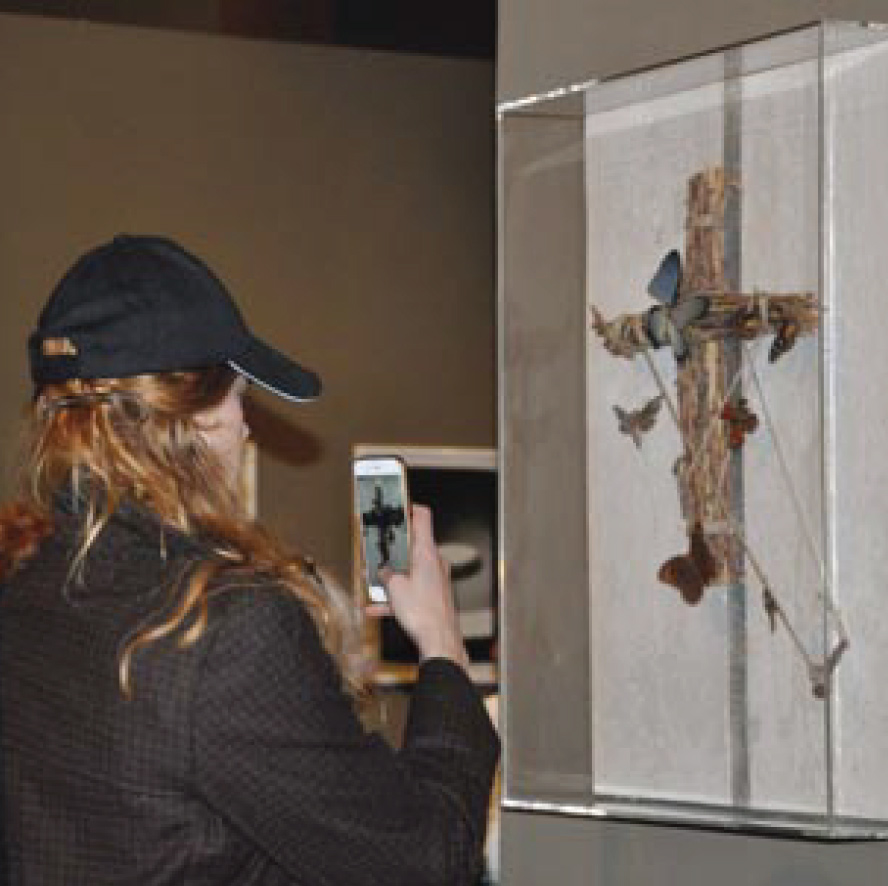
Rome 2017. Tea Falco photographing one of the artist’s works at the Complesso del Vittoriano.
His work is also documentation, memory, verification and the necessary contemplation of events. It represents subjective existence that becomes history: life caught and congealed in an image. Details from the private sphere, apparently negligible, are transformed into a discourse of historical importance. This is not nostalgia for other times, but on the contrary represents the sense of pausing, for a moment, where our provisional nature touches on the deception of eternity, fleeting and unattainable, which accompanies us our whole lives long.
Everything is entrusted to drawing, to plasticity, to the language of light/colour; tools organically composed on the legacy of tradition. With these skills enhanced by studying the great modes of expression – art, literature, cinema, music – and practicing disciplines such as Judo that strengthen the body/mind relationship, Bonanni aphas combined his painting, sculpture and assemblages with meditation on the present, with all of the relevant cultural implications. The present appears not as an isolated segment of conformation, but rather as a condition that brings with it all of the pressures of the past and is hotly pursued by the threats and uncertainties of the future, along with the anxiety produced by the ambiguity of being.
In Bonanni’s work the figures are always contained, enclosed in a dimension that transforms them too into symbols, or relics of a kind: nude bodies and letters, like ancient inscriptions, since writing is a code and every story has its own code. Bodies, as we have said, bodies that do not act, make no particular gestures, but are drawn in their physical consistency as much as in their “absence”, since the artist’s chief interest lies in the “weight” of the figure, its carnal essence. Presence/absence.
drawing of a work on paper – 2018, in the foundry – 2019, pauses during work
Bonanni’s career has evolved through various stages – as briefly noted here – but never losing sight of the human figure: the body as instrument, as unifying segment between heaven and earth, landscape to be explored, erotic suggestion, memento mori. Hence the invitation, the indication Identity of this decades-long collection of works becomes explicit, so that, knowing the dual significance of his complex creative mechanisms, we immediately seek the underlying sense of what the artist is communicating to us. While identity is, by definition, everything that makes an entity definable and recognizable, it also implies the concept of belonging to oneself; and it is just through ourselves that, over the course of time, we represent history. Each figure, in its presence or its absence, inextricably entwines both positive and negative characteristics, clearly showing that it has experienced disappointment, obsession, and the hypocrisy of society. In reality (a most ambivalent term in regard to these works) we can think of several alternatives to the title assigned by the artist to his show. Paintings, sculptures, assemblages from the last thirty years. The list of a crowded world, both plastic and graphic, which insinuates histories into histories, allegories of bodies and superimposition of the observed and the dreamed-of, the artist having long demolished any separation of the real from the surreal.
And here it seems that hybridization, already seen in works from the late Nineties, has found its true theatre, where age-old actors strut upon the stage: life, time, and death. Death seen as transformation, as transmission of energy, and lastly as a new origin. In the words of Tolstoy, “If a man has learned to think, no matter what he thinks about, he will always be thinking of his own death”. And here, in the ever-changing images of Bonanni’s works, fascination is exerted even by the inertia of a body, the bewilderment of a gaze resolved in the thickening of faded colours, since what prevails is the sign, displaying in all its energy what the artist has modelled in successive, fast paced contaminations.
In his most recent series of visual reflections, Bonanni seems to reply to a crucial question: when the vast panorama of history seems fully illustrated, when our fresh sensations are inexorably deluged by floods of images, when every hypothesis finds its way to a screen or photograph, what remains for one who still tries to breathe life into images through brushes, paints and sculpture?
There remains the ability to grasp reality, to represent though any means the doubt, the stubborn persistence of poetry, of human feeling even in an age of technological efficiency and programmed indifference. As if Bonanni, faced with the discontinuity of the imaginative process, strives to establish a continuum made up of materials differing in form and kind which capture the sign, emerge from the painted surface and elude, by encompassing them, the boundaries of the expressive means. Although aesthetics and reality can be identified, each retains its own autonomous life.
Undoubtedly, the retrieval of odd, eccentric materials for works of art has an ancient history, but in this case the object, either found or used in unorthodox manner, takes on powerful symbolic meaning. It is not merely a question of bringing commonplace “things” into the “sacred” territory of art, but of choosing the materials most representative of our time and making them an integral part of the message.
Preceding every work then, is a stage of careful planning that subtracts the image from the Arte Povero concept of object trouvé; because Bonanni’s viewpoint is antiformal, based on honest, intelligent rejection of conceptual superstructures.
What counts is his way of confronting the contemporary world and its technological predominance, initially avant garde (and hence triumphalist) but then asphyxiating and alarming; the artist does not contrast an idealized world of the past, but metabolizes it in the critical sense.
Each material or object is colour, even more than what is squeezed out of the tube. A picture is a fiery, dramatic and even vaguely satirical ensemble of signs and objects, of the colour of mankind and his cities. With this his vision, Bonanni joins the panorama of the most contemporary creativity, but differs from other similar experiences by striving to forge a powerful bond between expression and meaning, between stylistic modes and emotional content, instilling in these new creative hypotheses a tangible equivalence, both spiritual and imaginative.
To feel both alike and different from any prior experience, this is the “condemnation” of all artists. But it must not become the conditio sine qua non, the mainspring of artistic creation, and Bonanni has faced the issue as the fighter he is, never retreating one step and increasingly sure of his own strength. While his works could have assumed the nature of cold theses exemplifying practice or demonstration, they show instead no hint of the didactic, although resulting from precise planning. They have, instead, the characteristic of possessing a plethora of meanings (polysemantic) and of offering “clues” to understanding. Bonanni’s works are forms in themselves, containing forms and traces of forms emerging strikingly and unusually between the layers of colour. To the guarantees of the figure tout court are preferred the elaboration of an independent dimension and the claim to an inner value of vision.
Florence, July 2019






















